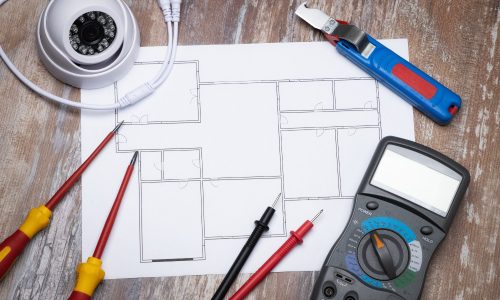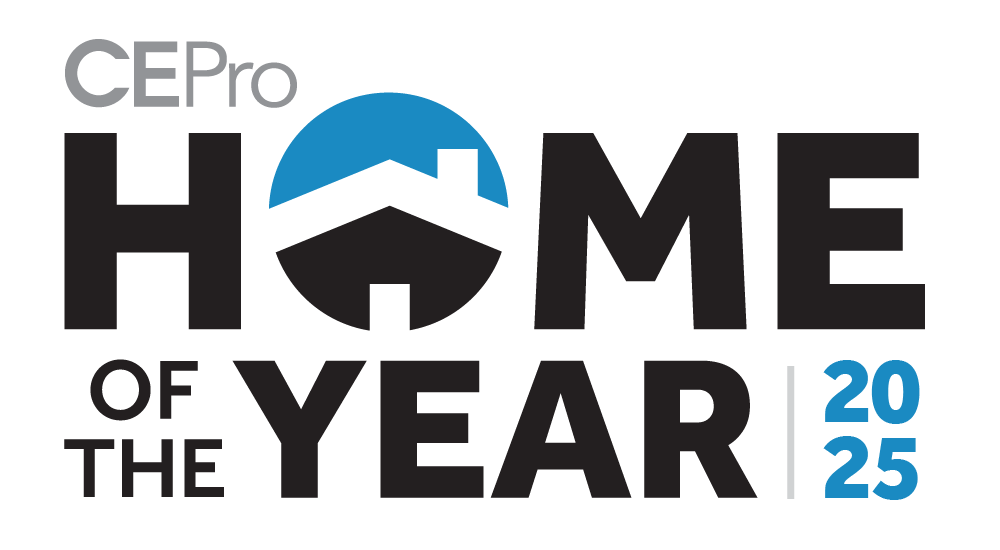The hysteria over Tesla’s Powerwall home battery has reinvigorated the discussion about low-voltage, DC-powered homes, and the potential for ditching traditional 240/120V AC infrastructures. I say reinvigorated because it’s a topic that has been debated — and even tried — since the early 1980s. And that’s not even including the original war the debate spawned between Thomas Edison and Nikola Tesla back in the day.
I don’t want to wholly ignore the merits of using alternating currents to power a home. There’s a reason why we started using them in the first place. Alternating current made it easy to transform to different voltages, and higher voltages meant you could carry more power longer distance with less infrastructure. The high-voltage electrical distribution system is a necessity if power is generated at some central location, miles from the end user, and distributed over a large network of cables. You can’t do that practically with low-voltage.
But if power is generated where it is used—the house—high-voltage is not really needed. And nowadays, most appliances are so energy efficient that we require very little power to be generated in comparison to how it used to be.
However, as many people pointed out in the comments to this article speculating on Tesla’s Power Wall, there are many reasons you can’t just scrap our beloved 120V AC house wiring starting with the next new-construction housing development. Or…can you? Believe it or not, this very thing has been tried before, big time, and almost succeeded.
From AC to DC: A Look at NAHB’s Low Voltage Smart Home Concept
Those of you over 40 or so might remember the Smart House Project.
Initiated in the early 1980’s by the National Research Center of the National Association of Home Builders (NAHB) with the cooperation of a collection of major appliance and electrical equipment partners.
The project proposed to completely replace the current home electrical infrastructure with a single multi-conductor ribbon-style cable that included electric power wires, communications cables for telephone and video, and other conductors that connect appliances and lamps with electronic devices that control the supply and switching of power. And it proposed to do this, like, next month.
The system had a central “computer” and power distribution equipment in a rack that provided power only to outlets that had appliances plugged in and turned on.
An electrical device could “request” either AC or DC, high- or low-voltage, down to 6V. It required ALL new everything. The cost was somewhere in the denial category.
The most amazing part is they almost pulled it off. The project was real enough to convince Amp Inc. to make spools of the special foil-backed ribbon cable, complete with termination tools, outlets, tie-down gadgets, connectors, and so on. They even convinced Whirlpool and other major appliance manufacturers to build the electronics into prototype products. You have to remember this is back when a microprocessor was a new innovation and home automation was in its infancy.
Obviously it didn’t succeed, mostly because the technology was not really ready for prime time and it was way too big a “gulp” for most builders and home owners. Once you installed it (and got it working), no going back.
But despite being too early, there are a few less-obvious lessons from the project.
- With the right backing, it could actually be done.
- At least some manufacturers were quite willing, enthusiastic really, to support it and make stuff to implement it.
- They were able to get cautionary support from the National Electrical Contractors Association.
Keep all this in mind with where we’re going.
How a DC-Powered Home Might Work
I think we can make a couple of assumptions about technology trends that will help make a low-voltage home infrastructure possible.
- Appliances available in the U.S. in the future (say 5 years) will be just as efficient and innovative as the appliances I can now buy (and I own) in Europe. (I have one, yes one, 25-amp main circuit breaker for my house, yet can run the stove, oven, clothes washer, microwave, lights, and all electronics, at the same time). This means that a future power distribution system (high- or low-voltage) only needs to supply a fraction of the power currently needed by appliances.
- Manufacturers of electronic equipment can easily adapt to whatever the house low-voltage is. Given how fast they change plugs, chargers, adaptors, this is a no brainer.
Based on these assumptions, a low-voltage house is feasible, powered directly from batteries that are charged either from solar panels (a la Tesla Powerwall) or from the legacy power grid while waiting on the backlog of solar panel installation.
This model is a perfect match for the direction power generation is going in the world and will speed up the development of more energy-efficient appliances, more efficient use of electricity in the home, and more innovation around the platform.
The infrastructure can evolve in three phases. Each phase is easily upgradable to the next. Let me jump to the end result first to show how this might work. I will be using the Powerwall as a possible example of low-cost storage, but there are others such as the Energy Hub from Rosewater Energy.
Power from either solar panels or the grid, if necessary, is stored in the Powerwall (PW) or equivalent device. DC is then supplied from the PW to a low-voltage load center. This device provides the same function as a regular 240V load center. It changes the voltage from the storage device to the voltage for lighting circuits (12V) and outlets (48V). It has low-voltage, high-current solid-state “circuit breakers.”
Ground wiring is no longer necessary. Branch circuits are wired exactly the way they are now, even using the same cable if desired (less the ground wire, now obsolete).
There will be several types of outlets. A typical outlet—now free of code requirements intended to prevent shock—contains a DC power jack (perhaps in USB form factor), data jack, cable TV jack, etc., as necessary. Lighting circuits work exactly the same except the LED fixtures, now free of the AC to DC conversion circuit, are cheaper and use even less power.
Since most things that plug into low-voltage are electronic and probably are network-capable, the low-voltage outlet should also attach the device to the home network. The Ethernet PoE standard could also be significantly enhanced to provide power to devices in the home.
The necessity for two different output voltages is based on the different requirements for LED lighting and other LV devices. 12V is a very common LED light fixture standard, especially for strip lights. The power required is low, so 14 AWG cable could easily meet lighting circuit requirements of 120 watts. 48V is a good compromise of voltage vs. current. It is the standard used for power PoE devices such as cameras, WAPs, etc., but PoE circuits are limited to 15 watts per device due to the very small gauge CAT5 cable. It can easily be regulated down for target voltages of 24V, 12V, even 5V.
I don’t think it would be necessary to do home-run wiring except for kitchen/laundry outlets. If the LV is wired with standard 14 AWG copper, a 100-foot 48V branch would have a voltage drop of 1 volt at 100 watts and 5 volts at 500 watts. Very acceptable.
A Step-by-Step Approach is Key to Successful DC Implementation
To test the concept, a first step might be to simply add an additional low-voltage distribution infrastructure to new or existing homes. It’s just an added component to the structured cabling infrastructure that low-voltage integrators are installing now. The LV cabling needs to be installed where there are other low-voltage jacks (Ethernet, cable TV, sat), plus a few where standard electrical outlets are located.
The next phase would introduce energy storage from solar panels or the grid. Here we still have the traditional HV infrastructure, but this time the Powerwall is doing double duty by supplying the LV infrastructure and converting DC to AC for high-voltage power.
As more and more devices directly connect to the LV infrastructure, we can ditch the HV infrastructure. In this phase, something like Tesla’s 7 kW model that can output 2 kW continuous is more than enough for LED lighting and a house full of electronics. Traditional 120V would handle larger legacy kitchen appliances, HVAC, other high-voltage loads.
Obviously, there are a number of details that need to be worked out such as connector types, current limits, max voltage drop, etc., but this are the easy part once the commitment to building a new infrastructure has been made.
Why Low-Voltage Home Architecture Makes Sense Today
Last month, my family took a three-week vacation to the coast. Before I left, I made sure everything I could think of was off: lights, computers, A/V gear, etc. But I didn’t go around unplugging everything. About two weeks after we returned, I got the electric bill that covered the time we were gone. It was about a third of our regular trying-to-be-thrifty bill.
I figured something was malfunctioning and eating power, so I went around and turned everything off again, same as before, and put a current clamp on the line into the house.
Surprise. I was reading about 1.8 amps. We have 220V power where I live (Turkey) so that’s about 400 watts. I have a small house (about 1,600 square feet), so that seemed like a lot.
What the heck is drawing that power?
It became obvious that evening when I turned out the lights. The house is full of little LED lights, the ones on the TV, amplifier, PlayStation, DVD player, etc. We all know about these. Devices that don’t really turn OFF. While they are not supposed to eat much power when off, they add up.
I also counted 12 plug-in-the-wall power supplies (wall warts): computer chargers, power supplies for phones, computer accessories, and other “low-power” gadgets. Then there is the modem, router, switch, and two WAPs.
But the big power-eater I forgot was the low-voltage lighting, mostly LED. We have several LED circuits that switch the secondary of the power supply to turn it on/off. The transformers are always warm to the touch. All this junk is ON all the time.
The reason it’s there is to transform the legacy 120V AC power down to a low-voltage that modern electrical and electronic equipment use. Almost everything outside the kitchen runs on low-voltage: TV’s, computers, LED lighting, network equipment, games, etc. The most recent big low-voltage change-over is lighting. Where I live, you can’t easily buy an incandescent light. Everything is LED—inherently low current, low-voltage devices that have to live in a 220 or 120V AC environment. Most of the cost of LED lighting is in the built-in power conversion electronics.
The trend to solar power and energy storage in the home is also an ever-present reality—despite electric utility resistance—and will only increase as panels and devices like the PW become less expensive and more versatile.
Lyndon Rive, CEO of Solar City, is quoted in the New Yorker magazine as saying his company completes a new home solar panel conversion every three minutes, and expects to get that to one every 3 seconds in the near future.
There is definitely an opportunity for home technology integration businesses in adapting the residential infrastructure to the changes taking place in power utilization.
Our industry has the knowledge, tools, and a foot in the door to “ground zero.”
The implementation of a low-voltage infrastructure can “boot-strap” itself like structured cabling did decades ago and how solar conversion is going today. All it will take is a few innovative companies to make the parts and pieces, adaptors, etc.
Perhaps it will be your company?
Additional References: Power to the People, Bill McKibben, New Yorker, June 2015 Elon Musk Debuts the Tesla Powerwall (video)







